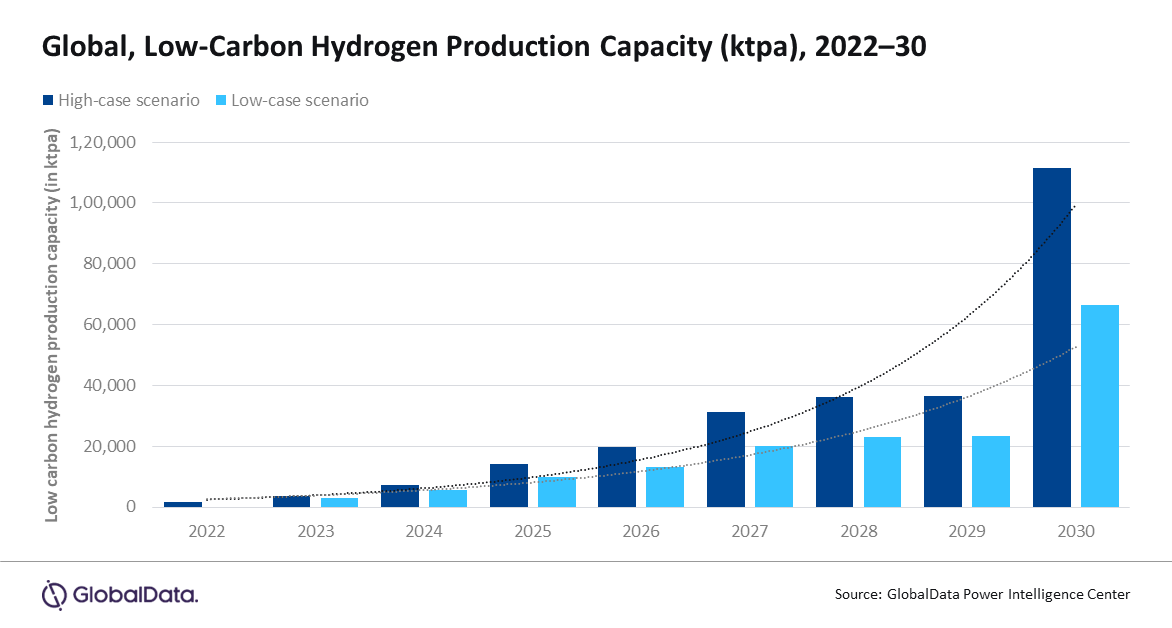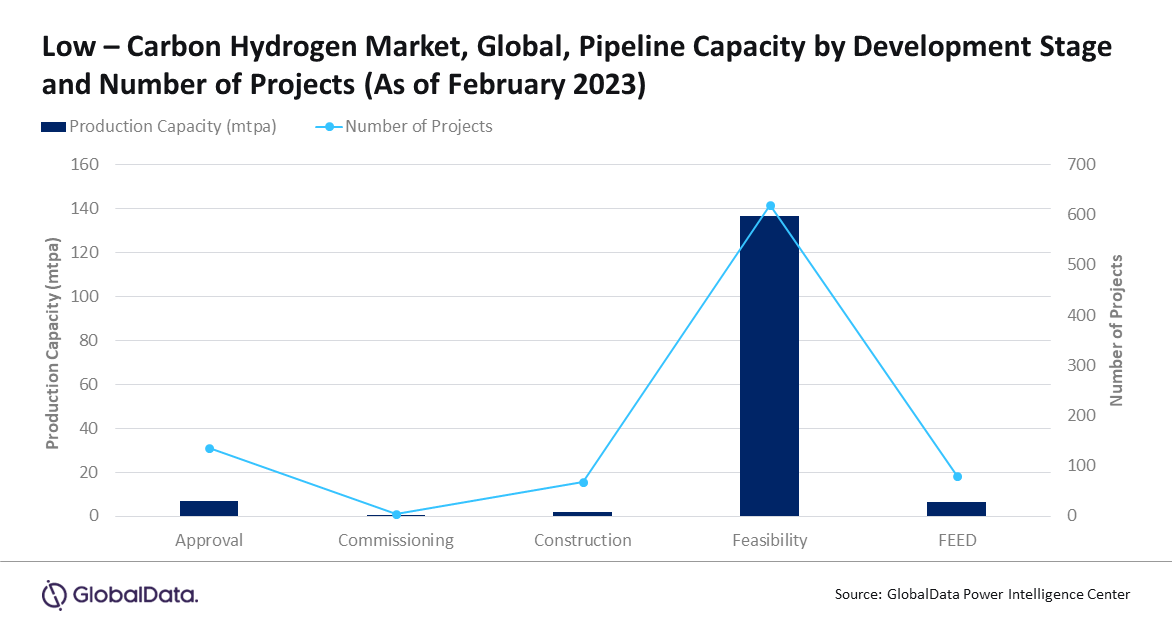Low carbon hydrogen is becoming an increasingly popular option for achieving long-term decarbonization goals, according to leading data and analytics company GlobalData. The company notes that low carbon hydrogen, including green hydrogen, is gaining traction as a critical component in the energy transition. Srinwanti Kar, Power Analyst at GlobalData, notes that various countries around the world have framed hydrogen roadmaps, strategies, mandates, and targets to develop a hydrogen economy in general and low carbon in particular.
Kar says: “Significant policy support and governments’ commitment to decarbonization is spurring investments in the hydrogen space. The momentum that has been built along the entire value chain is accelerating cost reduction in hydrogen production, retail, and end-applications.”
According to GlobalData’s latest report, the low carbon hydrogen sector took its first big strides during 2021-2022, as a number of projects were announced as part of the strategy towards energy transition. Kar adds that North America leads the market in terms of low carbon hydrogen active production capacity, followed by the Middle East and Africa, Europe, and Asia Pacific.
As of February 2023, the global low carbon hydrogen production capacity was 1,698ktpa, and it is expected to reach 1,11,326ktpa in terms of the high case scenario and 66,321ktpa in terms of the low case scenario by 2030. Kar notes that the cost of low carbon hydrogen production is expected to decrease by up to 60% over the next decade because of the reduction in the cost of renewable electricity.
GlobalData’s report notes that the hydrogen market has progressed rapidly in recent years, driven by its growing application in industries such as transport, industrial, energy, aerospace, defense, and construction. However, of the nearly 74MMT (million metric tons) of pure hydrogen demanded globally per year in 2021, low carbon hydrogen accounted for only 0.89%.

Despite this, Kar is optimistic about the future of low carbon hydrogen, saying: “Suitable planning at the funding level, constructive regulatory framework, and proper infrastructure may facilitate and accelerate the pace of projects. Facilitating regulatory framework and demand visibility by adopting legal measures, accelerating public funding for low carbon hydrogen projects, advancing hydrogen infrastructure development, technological advancements leading to cost reduction, access to finance, and government mandates or targets to support hydrogen adoption are some of the key factors which will drive the growth of low carbon hydrogen market.”

In November 2022, the World Bank Group announced the formation of the Hydrogen for Development Partnership (H4D), a new global project to increase the deployment of low carbon hydrogen in developing countries. As of February 2023, a total of 152mtpa of low carbon hydrogen capacity is in the pipeline, of which 1.9mtpa is in construction, 136.7mtpa in feasibility, and 6.4mtpa in front end engineering design (FEED) stage.
The future looks bright for low carbon hydrogen, and as Kar notes, with the right planning, regulatory framework, and infrastructure, the pace of projects can be accelerated, leading to a cleaner, more sustainable energy future.

